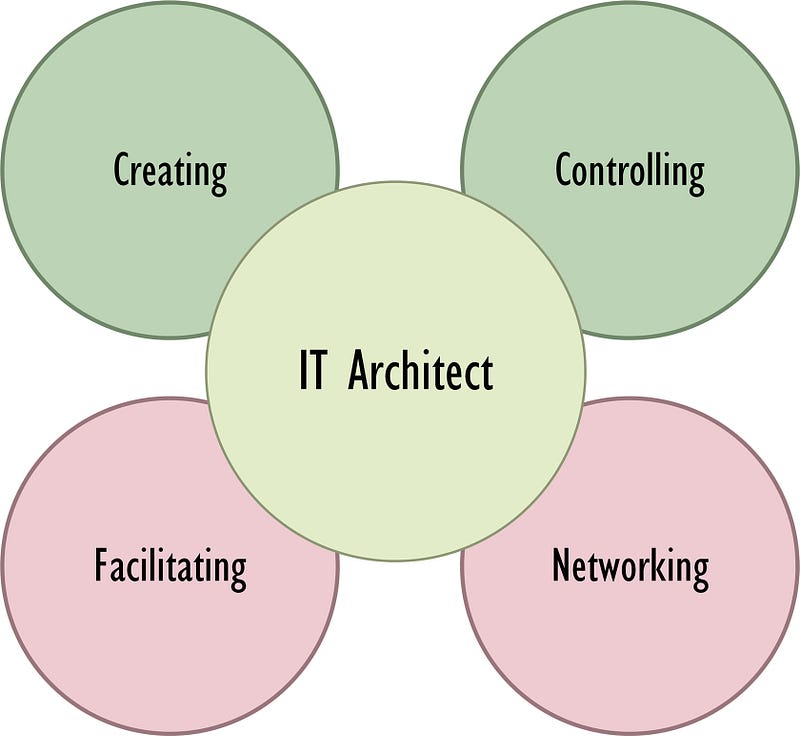Why Some Software Architects Are Unhappy at Work
Make sure you understand the consequences before switching roles

If you ask an IT engineer or software developer about their career path, they will probably tell you that they want to become an IT architect. They see it as the obvious next step.
John
I want you to meet John. John is a software developer. He works on code, infrastructure, and customer support. His daily work involves monitoring emails, debugging code, deploying applications, preparing presentations, and writing documentation. John does it all.
John keeps his knowledge up to date through training and certification. Every new project consults John at the start. He has become the cornerstone of the development department.
John’s dream was to become a solutions architect.
But after a couple of months in his new role, he feels disconnected from the project’s team members. Normally, he would always fall back on his deep technical knowledge.
Currently, he is mostly busy creating high-level project plans. John misses using his deep technical knowledge. He is unhappy in his new role.
Ally
Now meet Ally. Ally is a project manager. She started out managing small projects, but she was soon responsible for larger projects. Ally made managing projects seem easy.
When an IT manager position became available, Ally decided to apply. It was a significant step forward in her career.
Ally got the job, but after a couple of years, she is feeling burned out.
Handling a couple of projects was stressful but manageable. Managing an IT department is a different discipline. Ally is unhappy in her new role.
Why Are They Unhappy?
The primary nature of an architect, engineer, or project manager is who they are — not what they know.
You can increase your knowledge and build experience, but you can’t change your natural behavior. That behavior comes from your genes. Those genes define a large part of your happiness in a specific role.
If you look at children in kindergarten, you already can identify the natural leaders. You will also find children who have immense attention to detail.
If you were to meet them at a reunion and ask them about their work, you would see that most of them are in a profession that aligns with their natural behavior.
People who are born architects handle things differently than engineers. The same goes for project managers and IT department managers.
Let’s do a small thought experiment.
Your manager chooses you to be the new IT architect on a new project. You start your new role with a lot of energy and enthusiasm. You can choose between two different projects:
- The first project doesn't have a clear goal, project plan, or requirements. You are basically given a blank canvas.
- The second project has a clear goal, a defined project plan, and a set of initial requirements.
Which project do you choose?
If you love to organize, you will choose the first type of project. You can start organizing workshops to define the project.
If you are more of a creator, you would choose the second project. On this project, you can already start sketching the first architectural blueprints.
If we look at the four activities of an IT architect, we can see that two are about creation and the others require managing and organizing.
The Activities of an IT Architect
We can divide an IT architect’s activities into Creating, Controlling, Facilitating, and Networking.

The Creating and Controlling activities align with people who love to create. Facilitating and Networking are activities that align more with people who love to organize.
Let’s look at what these activities entail for an IT architect.
Creating

For most architects, creating is second nature. You have multiple years of experience creating solutions for customers. You create architectural visions that align with the business goals and strategic objectives of a company.
As an IT architect, you have to sketch possible solutions and help the development team identify potential solutions. You must continuously be looking for ways to innovate and always be on the lookout for techniques to decrease development time and improve quality.
You need the following traits during the Creating activity:
- Analytical.
- Recognize and be able to use patterns.
- Build visions.
- Let go of a fixed mindset.
- Trust the process.
- Open to new insights.
- Have drive.
Controlling

Controlling is about making sure that the envisaged solution becomes a reality. During development, you have to make sure that the implementation aligns with the architecture.
This is more difficult than it sounds. Even if you designed a great architecture that provides a lot of value for the organization, you still have to sell your vision instead of imposing it on the project’s teams.
This does not mean repeating your vision over and over again. Instead, try to create solutions together with the team. This helps to create a common ground for your ideas and designs.
You need the following traits during the Controlling activity:
- A passion for content
- Authentic
- Expressive
- Explicit
- Patient
- Transparent
- Firm
Networking

Networking is an essential activity for IT architects. Being able to build relations and find the right people for the job is critical. You need to know where to search for people and how to create a team. You should know which coworker to include in a job interview and which team member is best suited for a specific role.
This also includes knowing where to find technical resources such as development tools or existing commercial off-the-shelf solutions.
You need the following traits during the Networking activity:
- Entrepreneurial
- Emphatic
- Confident
- Transparent
- Firm
Facilitating

An IT architect should be able to act as a facilitator. For example, holding job interviews to assess new team members' quality or coaching team members.
It would be best if you were equally comfortable in deep-dive technical workshops and board-level presentations.
They should organize and facilitate workshops for different purposes, such as gathering requirements, defining quality guidelines, or tool selection.
One of a facilitator's rules is that you can’t have a stake in the workshop's outcome. This can be difficult as an IT architect because you probably have a preference for a certain outcome. Make sure that you remain objective during the workshop.
You need the following traits during the Facilitating activity:
- Empathic
- Sensitive
- Playful
- Intuitive
- A knack for creating confidence in others
- An ability to handle uncertainty
Conclusion
I have seen many people apply for a job that they felt was the next step in their career only to switch back after a couple of years because they were unhappy.
If becoming an IT architect is the next step in your career, make sure you understand the consequences. The role of an IT architect comprises more activities than creating and controlling. Networking and facilitating are also a big part of the position.
You can increase your knowledge and build experience, but you can’t change your natural behavior. Now, this doesn’t mean that working on activities that don’t fit your natural behavior is not possible.
But you have to make sure that you don’t lose your happiness through these activities.
Thanks for reading. I hope this article gives you more insight into the job of an IT architect. If you have any questions, feel free to leave a response.




